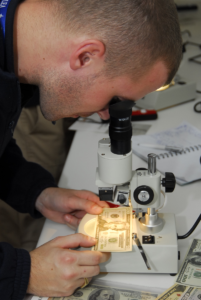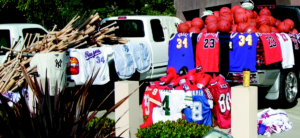What is Counterfeiting / Intellectual Property (IP) Theft?
Counterfeiting is a federal and state crime, involving the manufacturing or distribution of goods under someone else’s name, and without their permission. Counterfeit goods are generally made from lower quality components, in an attempt to sell a cheap imitation of similar goods produced by brands consumers know and trust.
Legitimate manufacturers devote significant efforts to building a reputation for quality among consumers; counterfeiters, in turn, seek to profit unfairly off of another company’s good name.
Just How Big is the Counterfeiting Problem?
Counterfeiting is Big Business. In Fiscal Year 2012, the Department of Homeland Security seized counterfeit goods valued at over $1.25 billion at US borders. Unfortunately, we also know that those represent only a small percentage of the total market for counterfeit goods. Globally, the trafficking of counterfeit goods is much larger, and growing. That growth is driven in part by CONSUMER DEMAND.
Counterfeiters often prey on consumers’ desire for low prices, but consumers should recognize that there is a real difference between a cheap price and bargain. And the cheap prices offered by counterfeiters often come at a very high cost to others.
What Types of Goods Can Be Counterfeit?
Counterfeit goods span across multiple industries including everything from apparel, accessories, music, software, medications and cigarettes, to automobile and airplane parts, consumer goods, toys and electronics.
-
How Does This Impact You?
- Counterfeit goods are often made using cheap, substandard, and dangerous components that put the health and safety of consumers at risk.
- Purchasing from counterfeit websites puts you at risk for identity theft.
- Counterfeiting is illegal and purchasing counterfeit products supports illegal activity.
- Counterfeiters generally do not pay taxes meaning less money for your city’s schools, hospitals, parks and other social programs.
- Counterfeiters may not pay their employees fair wages or benefits, have poor working conditions, and sometimes use forced or child labor.
- The profits from counterfeiting have been linked to funding organized crime, drug trafficking and terrorist activity.
- When you purchase a fake item, you become part of the cycle of counterfeiting and your money directly supports things you would never want to support.
-
What is the International AntiCounterfeiting Coalition (IACC)’s Mission?
- The touchstone of the IACC’s mission is to combat counterfeiting and piracy by promoting laws, regulations, directives, and relationships designed to render the theft of intellectual property undesirable and unprofitable.
- The IACC serves as an umbrella organization, offering anti-counterfeiting programs designed to increase protection for patents, trademarks, copyrights, service marks, trade dress and trade secrets.
- Critical to the IACC’s purpose is its belief that acts of counterfeiting create severe public health and safety hazards, as well as economic harm. The IACC initiates actions and supports actions by the government and private sector that will ultimately result in increased enforcement, lead to the prosecution of intellectual property infringers, and create a strong deterrent to counterfeiters and pirates.
- In an effort to create conditions under which its members’ intellectual property rights are safe from illegal copying, infringement and other forms of theft, the IACC engages in substantive dialogue with governments, rights-holders, and partners from a variety of industries and sectors around the world.
- In pursuing its mission, the IACC provides law enforcement officials with information and training to identify counterfeit and pirated products and in the methods of product security to prevent the infringement of its members’ intellectual property rights.
-
What Can You Do To Help?
- Be cautious when purchasing products.
- If the price looks too good to be true, it probably is.
- Products being sold without packaging, or if the packaging appears to be of low quality, or includes printing errors (e.g., blurry pictures, typos), can indicate that a product is not what it says it is.
- Consider where the product is being sold, and whether you’d normally expect to find the product for sale there.
- Deal with legitimate/established merchants
- If in doubt, trust your instincts. Does that professional-looking website include poorly-written product descriptions (e.g., poor grammar and typos)? Do they have a no-returns or no-refunds policy?
- Consumer Awareness
- Test your knowledge of counterfeits by clicking here.
- For more information on the IACC and counterfeiting, visit iacc.org


